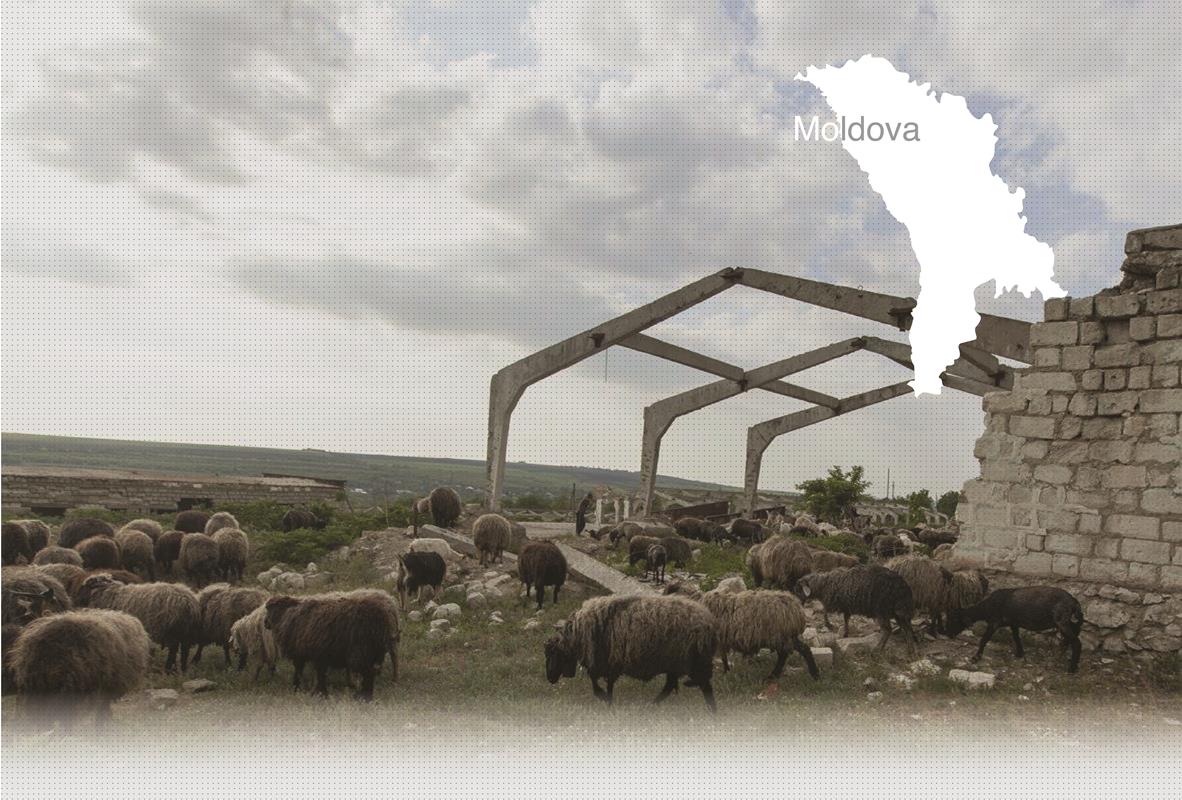

1 Killing site(s)
Petru B., born in 1928: “Before the war, there were several Jewish families living in the village. I remember some names of the local Jews: Basya, Reisa, Shmil, Zisa, as well as my classmate, Sima. When the Germans and Romanians arrived in Grimăncăuți, all the Jews were arrested and gathered in the town hall. Sometime later, they were taken to a nearby field where they had to dig a mass grave before being shot by two soldiers.” (Witness N°228M, interviewed in Grimăncăuți, on May 2, 2016)
“On July 5, 1941, I, my relatives, Shimon S. Schwartz (1880), Rak ..- Sh. Schwartz (1887), (first name illegible) Schwartz (1915), Aron Sh. Schwartz (1922), my husband Mendel Freifeld (1914), as well as other inhabitants of our district, were evacuated towards (illegible), in the village of Korman, to cross the Dniester. As there were a lot of people and we hadn’t been able to cross the river, we returned to the village of Grimăncăuţi where we were arrested. Our men were killed by Romanian gendarmes and their auxiliaries. As for us, we were deported to a camp, where we stayed for three years until the liberation of Bessarabia by the Red Army. After which, we returned home. " [Statement of a Jewish survivor, Reisa Schwartz, resident of Briceni, given to the State Extraordinary Commission (ChGK) in March 1945]
“In the center of the village [of Grimăncăuţi], north-east of the church, 800m from the rural council, on the territory of the property of the citizen Nikolai Hmatok was identified in a pit 5m from the river. The excavations carried out brought to light 9 decomposed male bodies, lying jumbled up in the pit. Seven bodies are completely naked. The other two are wearing ripped underwear with no shoes on. Since the bodies of the executed were completely decomposed, no trace of violence was found. However, the traces of blood present on the skulls led the commission, assisted by the medical specialist, to the conclusion that the shots were aimed at the neck and were carried out with a firearm. Attached is the list of victims.” […] [ Act drawn up by Soviet State Extraordinary Commission (ChGK) on March 28, 1945 RG 22.002M, Reel 18 (5) p. 68-78.]
Grimăncăuți is a village in the Briceni region, located 4km north of Briceni in northern Moldova, on the border with Ukraine. About 2,000 people live in the village today. On the eve of the Second World War, both Moldovans and Jews lived in Grimăncăuți. The Jews were mainly craftsmen and merchants, owners of several shops and a local inn. Many Jewish women were seamstresses. Many non-Jewish inhabitants of Grimăncăuți would learn crafts from the Jewish craftsmen. According to Petru B., born in 1928, the relations between Jews and non-Jews were good and children of both communities would go to the same local school. The biggest Jewish community in the surrounding area was in the capital of the region, Briceni. According to official census figures in 1930, the Jewish population of Briceni numbered 5,354 (95.2% of the total population). It is more than probable that the Jewish community from Grimăncăuți would attend to one of the fourteen synagogues and Jewish cemetery of Briceni.
Grimăncăuți was occupied by the Russians from the beginning from 1940 until July 1941. The Romanian troops arrived in the village most probably in July 1941. According to the Soviet archives, on July 5, 1941, Jewish inhabitants were evacuated to the village of Korman, to cross the Dniester. Those who could not cross the river, returned to the village of Grimăncăuţi where they were directly arrested by the Romanians. Most of these Jews, mostly women and children, were deported to unknown camps and about ten Jewish men were executed in the village. According to Petru B., born in 1928, several Jewish men were gathered in the building of the town hall from which they were taken to a nearby field. Once at the execution site, the Jews had to dig a large pit, get undressed and stand on the edge of the pit. They were then shot by two Romanians. The mass grave was filled in with soil by several villagers after the shooting. Following the Second World war, the bodies of the victims shot in Grimăncăuţi were exhumed and reburied at the Jewish cemetery in Briceni. The execution site, actually located in the garden of a private house, remains without memorial. According to other sources, 10 local families and 60 Jews from Briceni were also shot in Grimăncăuți. Some sources mention that as well that some Jewish young girls had been raped by the Romanians during the German-Romanian occupation. After the investigation in Grimăncăuți, we can assume that the Jews who were shot in the village in July 1941 were those who didn’t manage to cross the Dniester river after their evacuation to Korman at the beginning of the occupation.
Do you have additional information regarding a village that you would like to share with Yahad ?
Please contact us at contact@yahadinunum.org
or by calling Yahad – In Unum at +33 (0) 1 53 20 13 17